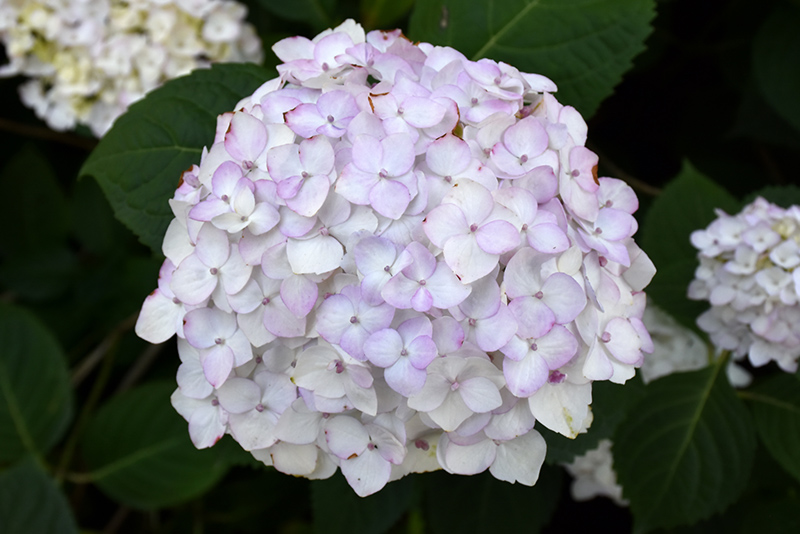>> Home
Blushing Bride Hydrangea
Hydrangea macrophylla 'Blushing Bride'
Height: 4 feet
Spread: 5 feet
Sunlight:
![]()
![]()
Hardiness Zone: 4
Other Names: French Hydrangea
Description:
This exciting new shrub is the second in Bailey's Endless Summer series, offering large snow-white ball-shaped flowers with semi-double florets which fade to soft pink; blooms over an extended season on both old and new wood extending its hardiness range
Ornamental Features
Blushing Bride Hydrangea features bold balls of semi-double white flowers with shell pink overtones at the ends of the branches from early summer to mid fall. The flowers are excellent for cutting. It has dark green deciduous foliage. The glossy pointy leaves do not develop any appreciable fall color.
Landscape Attributes
Blushing Bride Hydrangea is a dense multi-stemmed deciduous shrub with a more or less rounded form. Its relatively coarse texture can be used to stand it apart from other landscape plants with finer foliage.
This shrub will require occasional maintenance and upkeep, and should only be pruned after flowering to avoid removing any of the current season's flowers. It has no significant negative characteristics.
Blushing Bride Hydrangea is recommended for the following landscape applications;
- Accent
- Mass Planting
- General Garden Use
Planting & Growing
Blushing Bride Hydrangea will grow to be about 4 feet tall at maturity, with a spread of 5 feet. It tends to be a little leggy, with a typical clearance of 1 foot from the ground. It grows at a medium rate, and under ideal conditions can be expected to live for approximately 20 years.
This shrub does best in full sun to partial shade. It requires an evenly moist well-drained soil for optimal growth. It is not particular as to soil type, but has a definite preference for acidic soils. It is highly tolerant of urban pollution and will even thrive in inner city environments. Consider applying a thick mulch around the root zone in both summer and winter to conserve soil moisture and protect it in exposed locations or colder microclimates. This is a selected variety of a species not originally from North America.
